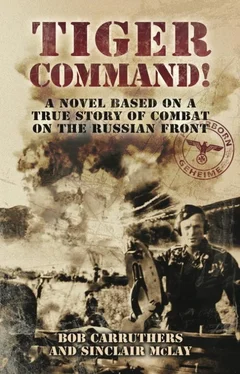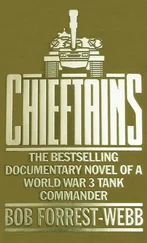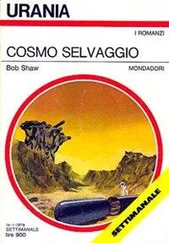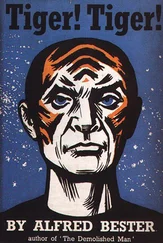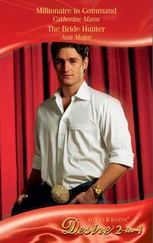Korsak had decided to send the tanks on a flanking movement from the south and the southwest, in order to give the enemy the impression that they were surrounded by a large force. The tanks were echeloned in depth. The heavy tanks were in the first echelon, the lighter tanks with desyanti tank riders were in the second echelon, and in the third echelon were tanks hauling guns. The shells for the gun were carried on the tanks.
Standing motionless in the commander’s position of his KV-1, lit by the faint glow of the moon, Korsak held his breath and looked at his watch. Naminsky had better not let him down.
For once, he was not disappointed. Twenty minutes before the attack, exactly as ordered, every available piece of artillery on the Soviet side began to rain down shells on the German front lines.
“Good, give those bastards hell,” thought Korsak to himself.
The artillery bombardment was fierce and brutal in its intensity, and for twenty nerve-rending minutes every gun was fired in a pitiless preparation on the front lines of the fascists. Exactly on cue, half of the barrels then shifted to the rear, concentrating on the possible avenues of retreat.
Zero hour was thirty minutes before dark. In these thirty minutes, Korsak’s tanks moved from the jump-off positions, reached the Soviet infantry positions, collected the designated desyanti, and moved out.
On the German side of the lines the ferocity of the artillery preparation came as a disconcerting surprise. Nonetheless, SS-Untersturmführer Brand and his men followed their customary practice and scuttled into cover in their dugouts on the rear slopes. As soon as the artillery fire was lifted to the rear firing points and the reserve positions, Brand realized that the attack was about to commence. He roused his unwilling men and began to move back towards the firing positions, but so heavy was the concentration of mortar and now machine gun fire on the forward firing points that the Germans were pinned down and unable to get back to their firing positions.
According to Korsak’s plan, the Soviet small-arms weapons were brought forward and proceeded to destroy the effectiveness of the few active forward firing points by direct fire at the embrasures. Meanwhile, the artillery and mortars kept up the neutralising fire on the rear firing points.
Attacking in formation, Naminsky was able to capture the enemy positions with mostly just the supporting artillery and machine-gun fire. The full moon aided observation and, soon after crossing the line of their own infantry, the Soviet tanks rolled to a halt and opened fire on the remaining points of resistance. The flashes of the few German guns firing in return and the constant stream of flares discharged by Soviet infantry aided fire direction.
From his position to the south, Korsak noted with grim satisfaction that the German artillery seemed to have been taken completely by surprise and was conducting un-aimed, disorderly fire, and often seemed to be shelling their own infantry positions. Pressed from both the flanks and the front, the will to fight suddenly evaporated, and SS-Untersturmführer Brand and his surviving men began a disorderly retreat.
Korsak realised that his tanks and infantry had taken full possession of the enemy strongpoint. He now charged after the fleeing survivors, grinding them under the tracks of the KV-1. He sensed that there was no time to rest. The tanks manoeuvred along the south and southwestern slopes of the hills, enabling Naminsky’s infantry to consolidate their positions. It soon became evident that the hills were securely occupied by Naminsky’s infantry, and Korsak gratefully ordered the tanks returned to the grove to refuel, take on more ammunition, and be inspected.
Only Korsak and his KV-1 remained on the field. The German dead, the equipment left on the field of battle, and the few dazed prisoners captured that night gave proof that the night attack was a complete surprise to the Germans. It felt good. The impression of complete encirclement was created, and enemy officers and men scattered in all directions.
During the night the enemy attempted a few desultory counterattacks, but they were effortlessly beaten back and, most importantly, resulted in no loss of Soviet tanks.
The mission was a complete success. The White Devil had restored his reputation. Now it was time to strike back.
CHAPTER 5
DIE WOCHENSCHAU
Far away from the thunder of the Eastern Front, von Schroif and his crew were experiencing a different kind of night. They worked together to get Wohl through the paper he needed to pass.
SS-Panzeroberschütze Karl Wendorff had assembled a crude kindergarten facsimile of a radio transmitter and receiver using boxes, tins, buttons and laces. Patiently, and in the most graphic style possible, he taught Otto Wohl about the right wavelengths and volumes. He encouraged Wohl to draw the positions so that he became familiar with the need to check that all the switches were in the “off” position when not in use, and also to check the connections from the battery over box 23 in the base plate. He made a checklist of the adjustments for locking the frequency and switching to keyed mode. Then he turned to instruction on the intercom and illustrated the use of buttons for speaking and listening… and then they went back to the radio… and then returned to the intercom.
When he was satisfied that Wohl had a firm grasp of the procedures and the thinking behind them, he at last moved onto the bow machine gun. This was easier, as SS-Panzerschütze Wohl had enacted this role in real life and in the heat of battle too. The job in hand, however, was now to turn that instinctive knowledge into something that might pass muster on an exam paper.
“Jamming?”
“Remove foot from trigger. On right, move cocking slide back. Check position of lock, check what is being ejected, anything in the way of the lock?”
“Lock is in almost forward position. What is ejected?”
“Cartridge…”
“Intact. What jams?”
“Locking catch.”
“Remedy?”
“Exchange barrel.”
“Lock is in the centre position. Barrel free. What jams?”
“Ejector rod.”
“Remedy?”
“Exchange lock. Lock does not stay in place, if it is to stop hold belt, wear on trigger, use other machine gun.”
Still he went on, memorising the chart, saying it out loud until Wohl could answer each of Wendorff’s questions.
With the other three men independently studying their own allocated tasks, the little hut was a hive of mental activity, the bright light of dedicated application shining all night and into the small hours as the Tigermen prepared for the day that lay ahead.
At three o’clock, Schroif decided that they should all rest, except for Otto Wohl, who had to go back and restudy the role of the loader, a subject in which he would ordinarily be an instructor.
The next set of exercises involved the complicated physics that governed the survivability of a hit and the angle at which the tank should be set in front of a target. To help Wohl, it was explained that it was basically like a clock, with 12 o’clock facing straight ahead. Given that the enemy’s shells had more metal to penetrate if they hit the tank at an angle rather than straight on, it was a golden rule to maintain the tank at an angle to its opponent.
For shorthand reasons, Wendorff developed a quick explanation. The safest angles could be equated to certain “meal times”. For example, given that the best angles to position the tank at had clock designations of 10.30, 1.30, 4.30 and 7.30, these angles and the corresponding times were labelled for the ever hungry Wohl as “Breakfast”, “Lunch”, “Coffee” and “Supper”.
The Cloverleaf was a simple way of representing the areas and distances in which the Tiger was safe from enemy anti-tank fire. For example, knowing the distance at which a shell from a T-34 could penetrate the Tiger’s armour, and also knowing the advantage that the angle of the tank could confer, Wendorff prepared a simple diagram which resembled the leaves of a clover. This simple aide-mémoire would ensure that even the slower members of the crew could quickly calculate whether they were in danger or not.
Читать дальше
